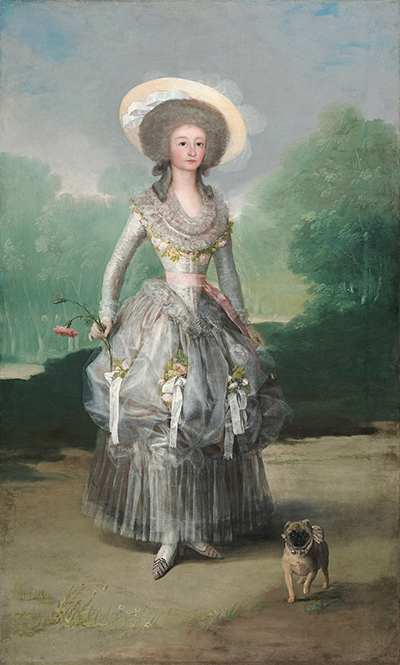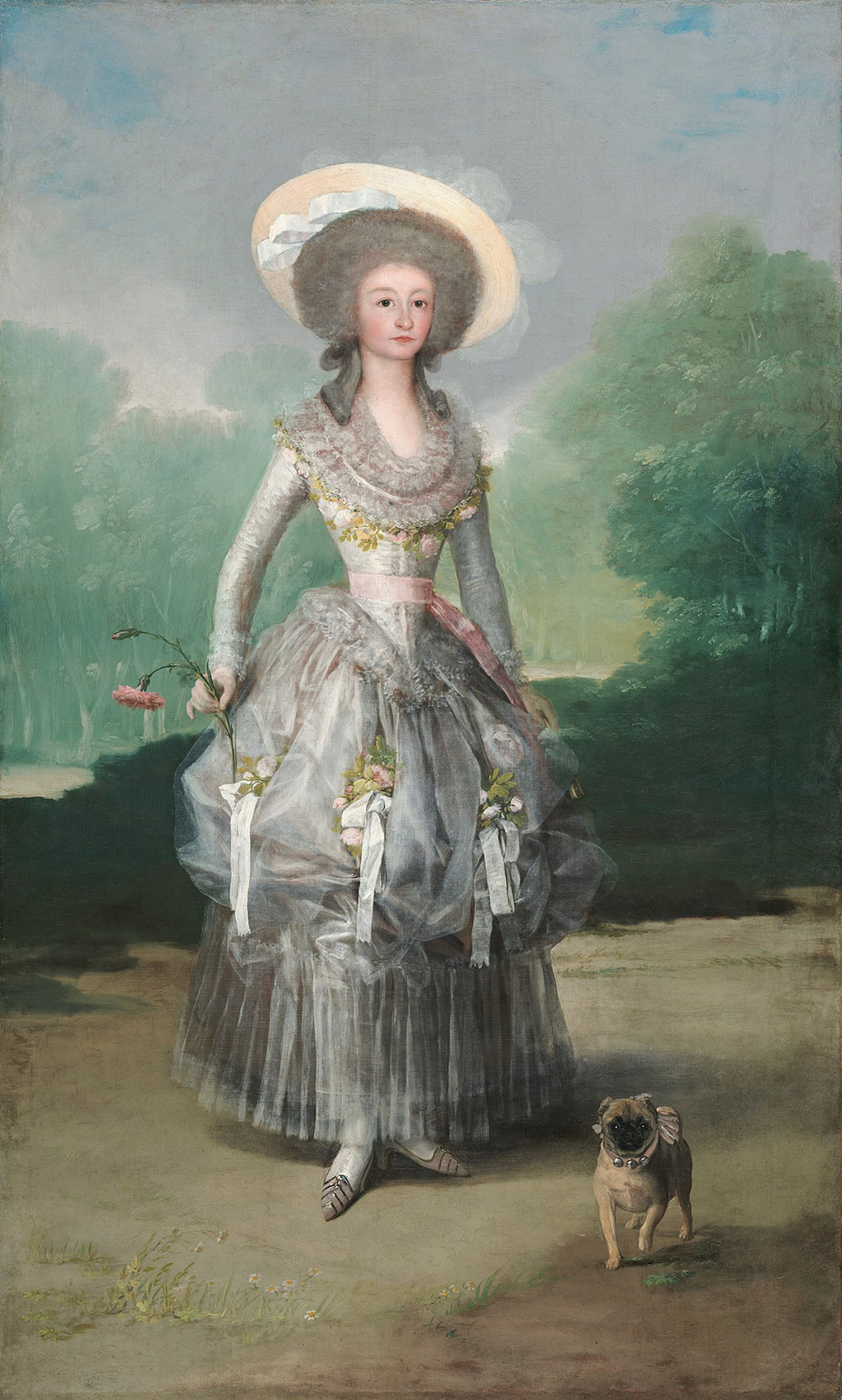The Marquesa de Pontejos had a distinctively unique feature about her. The delicate, waisted figure of María Ana de Pontejos y Sandoval, the Marquesa de Pontejos, has been stripped from the trees, herbaceous and undergrowth, almost abridged to the abstraction.
Splendidly attracted, it characterizes those Spanish aristocrats. They influenced Marie Antoinette's shepherdess style, which was so common in pre-revolutionary France. In this oil on canvas painting, the Marquesa de Pontejos shows off a pink carnation at her fingertips. Brides often depicted this carnation as a love symbol. At age 24, she married Carlos III's radical prime minister, sibling of the Conde de la Floridablanca, in 1786. Her husband was the ambassador of Spain to Portugal at the time.
The Marquesa's pug dog echoes his mistresses' steep, doll-like posture with its ribbons and bells. Her elegant coiffure, straw sun hat, and floral gown mimic the charm of the French Queen, Marie-Antoinette. She often dolled up as a shepherdess. This lavish, exotic costume highlights the strongly corseted waist of the Marquesa de Pontejos, popular among Spanish aristocracy. Its upright, majestic and standoffish gaze draws from Velazquez' royal portraits.
As a tapestry artist, Goya removed unimportant information which the weavers may have had trouble executing. This movement towards a more straightforward style influenced his portraiture. In vast and sketchy areas of colour, the jade-green and pearl-grey dresses are portrayed. This portrait, Goya possibly painted on the event of the Marquesa de Pontejos first marriage with Francisco de Monino y Redondo, a brother to the omnipotent Count of Floridablanca, another of Goya's noble advocates.
Other famous masterpieces painted by Goya are:
There are several others, but these particularly stand out. The Maja Vestida is first cited in an inventory of 1808 worked out after the fall of the Prince of Peace, and Ferdinand VII confiscated his properties. Joseph Bonaparte ordered his agent Frederic Quilliet to catalogue all the Godoy possessions under the French colonization. The Maja vestida was not mentioned, and Elias Tormo inferred, in 1902, that this painting dates back to a subsequent period. The commission's origins are unclear, but it is believed that the work was carried out somewhere between 1800 to 1805 when the professional relations between the painter and Godoy were done.





